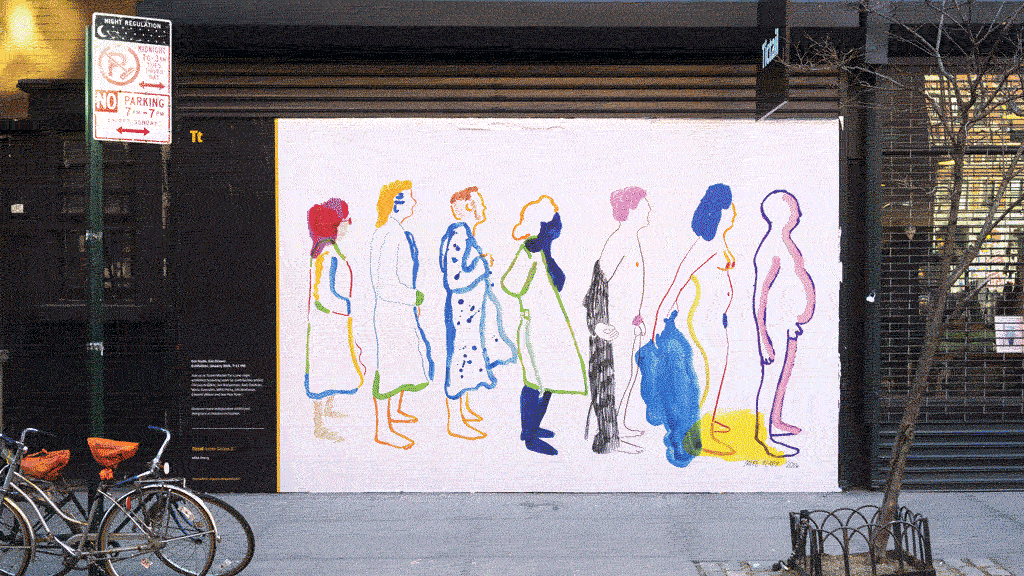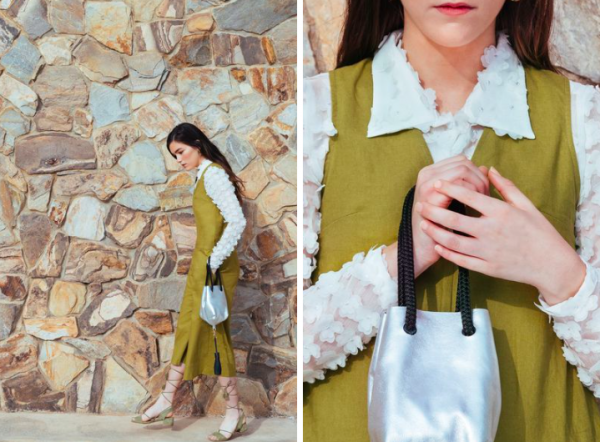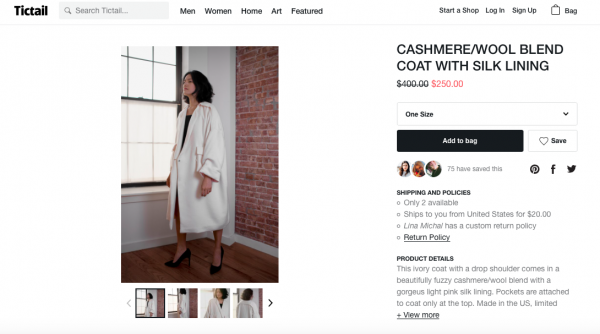Wearable Art: Why Unprofitable Tictail Market Is Actually Totally Worth It
Here’s a kind-of-a-shocker: Ultra-hip social marketplace Tictail‘s brick-and-mortar flagship is that it’s not profitable.
Tictail Market is the brand’s one and only storefront, located in Manhattan’s Lower East Side — and surprisingly, the IRL store makes less in revenue than even many of the e-commerce site’s online independent sellers.
“The [brick-and-mortar] store makes about $50K a month; rent is $17K. Salaries and expenses bring us close to $8K, and that about covers it,” co-founder Carl Walderkrantz admits to Forbes readers.
So why is it important for an e-commerce site that pulls in millions of shoppers a week to offer an in-person experience that doesn’t generate significant profits?
Is it just to be able to flaunt kickass storefront gifs? (Courtesy of Tictail NYC)
Walderkrantz says that while the “future is moving toward online, the joy of shopping is still synonymous with an in-person experience” for many customers.
And in the tradition of other successful sites like Warby Parker, Bonobos and Away and less-that-lucative storefront was the best way to guarantee local awareness.
Photo courtesy TicTail
“Tictail Market literally put us on the map in this city,” says Walderkrantz, adding that it gives the brand “street cred.”
Originally, the DIY e-commerce site was developed as a means of giving entrepreneurs the ability to build online shops.
Photo courtesy of Tictail
It is now touted as the ‘easiest platform for discovering emerging brands around the globe’ — a gateway to thousands of under the radar brands from over 140 countries via an easy-to-navigate social marketplace. Brands include By Far (Bulgaria), Orphée (France), Humanscales (Sweden), and Lina Michael (Sweden)
Photo courtesy of Lina Michael/Tictail
And while mobile tools like Pinterest Visual Discovery continue to accelerate the switch from in-store browsing to online purchasing as we know it, Walderkrantz still believes that an IRL store is the best way to engage with a community of potential brand ambassadors.
“It’s a way to connect the brands and shoppers, and make the shopping experience feel a lot more personal” he says.
And the merits of a brick-and-mortal extend to larger brand partnerships, added social media activity through in-person events and flashy storefront art. “For each individual who visits your store, you should aim to reach another 50 through their extended network.”
Sounds worth it, eh?





